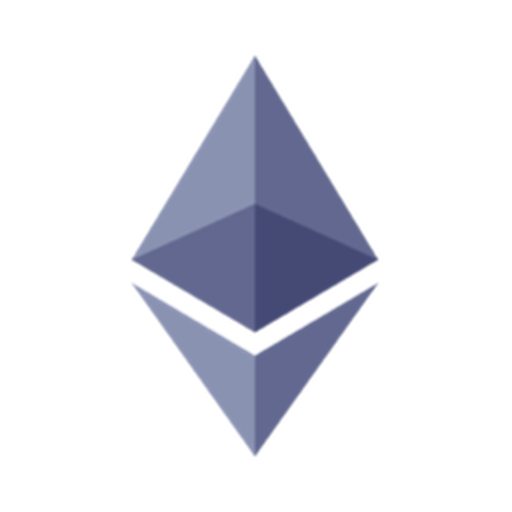Ethereum vs Ethereum Classic – Price, Market Cap & Performance Compared
Which coin performs better – Ethereum or Ethereum Classic?
We compare the current price (4 158.7 $ vs 18.67 $), market cap (501 570 513 864 vs 2 872 570 016) and all-time high (4 946.05 vs 167.09).
Find out which one stands out right now!
Ethereum is currently trading at 4 158.7 $, while Ethereum Classic stands at 18.67 $. These cryptocurrencies differ not only in price but also in market presence.
The market cap of Ethereum is around 501 570 513 864, and Ethereum Classic has about 2 872 570 016. Their respective all-time highs are 4 946.05 for Ethereum and 167.09 for Ethereum Classic.
Daily trading volume and the 24h price change (-0.16228 % vs -0.68797 %) also offer key insights.
Compare all metrics now and see which coin fits your investment strategy best!
Ethereum
Ethereum is a pioneering platform in the world of blockchain technology, known for its smart contract capabilities that have revolutionized decentralized applications. Unlike traditional cryptocurrencies, Ethereum serves as more than just a digital currency, providing a robust environment for developers to create a wide range of blockchain-based innovations. The vibrant and expansive ecosystem surrounding Ethereum is continually evolving, attracting developers and enterprises alike to explore its versatile and innovative potentials.
more informationEthereum Classic
Ethereum Classic is a decentralized blockchain platform that maintains the original Ethereum code after the split with Ethereum post-DAO hack. Known for its emphasis on immutability, Ethereum Classic preserves the principle that code should remain unchanged once deployed. Its community values security and a commitment to the original vision of blockchain, making it a unique player in the cryptocurrency landscape.
more information

|

|
|
|
|
General Information |
|
|---|---|
|
Title
Ethereum
|
Title
Ethereum Classic
|
|
Symbol
eth
|
Symbol
etc
|
|
Whitepaper
-
|
Whitepaper
-
|
|
Website
|
Website
|
|
Community
-
|
Community
|
|
Last Updated
2025-09-24 23:29
|
Last Updated
2025-09-24 23:29
|
Price Data |
|
|---|---|
|
Current Price $
4 158.7 $
|
Current Price $
18.67 $
|
|
High 24h
4 199.55 $
|
High 24h
19.06 $
|
|
Low 24h
4 100.86 $
|
Low 24h
18.54 $
|
|
Price Change 24h
-6.75973 $
|
Price Change 24h
-0.12930 $
|
|
Price Change % 24h
-0.16228 %
|
Price Change % 24h
-0.68797 %
|
Market Data |
|
|---|---|
|
Market Cap
501 570 513 864
|
Market Cap
2 872 570 016
|
|
Total Volume
29 494 809 415
|
Total Volume
87 667 971
|
|
Market Cap Change 24h
-1 224 722 941
|
Market Cap Change 24h
-23 708 854
|
|
Market Cap Change % 24h
-0.24358 %
|
Market Cap Change % 24h
-0.81860 %
|
|
Return on Investment (ROI)
4 802.37446 %
|
Return on Investment (ROI)
4 047.91549 %
|
Supply and Availability |
|
|---|---|
|
Circulating Supply
120 703 697
|
Circulating Supply
153 651 516
|
|
Total Supply
120 703 697
|
Total Supply
153 651 516
|
|
Max Supply
-
|
Max Supply
210 700 000
|
Historical Data |
|
|---|---|
|
All Time High (ATH)
4 946.05
|
All Time High (ATH)
167.09
|
|
ATH Change %
-15.98453 %
|
ATH Change %
-88.80520 %
|
|
ATH Date
2025-08-24 19:21
|
ATH Date
2021-05-06 18:34
|
|
All Time Low (ATL)
0.43298
|
All Time Low (ATL)
0.61504
|
|
ATL Change %
959 634 %
|
ATL Change %
2 941.25568 %
|
|
ATL Date
2015-10-20 00:00
|
ATL Date
2016-07-25 00:00
|
Ethereum
The Ethereum Revolution: A Timeless Analysis
Ethereum, often symbolized as ETH, stands as a titan in the world of blockchain technology. Unlike Bitcoin, which is primarily a digital currency, Ethereum is a decentralized platform that facilitates smart contracts and decentralized applications (dApps). This dual functionality gives Ethereum a unique proposition within the cryptocurrency sphere, making it a cornerstone of blockchain innovation.
An Overview: Advantages and Disadvantages of Ethereum
One of Ethereum's main advantages is its flexibility through smart contracts and dApps, which can automate transactions and operations without intermediaries. This reduces costs and enhances security and transparency. Ethereum's robust developer community continuously works to improve and innovate, fostering a vibrant ecosystem.
However, Ethereum is not without its challenges. The network has often faced scalability issues, resulting in slower transaction speeds and higher fees, particularly during peak usage times. While efforts like Ethereum 2.0 aim to address these limitations, the transition is both complex and ongoing, presenting uncertainty for some users and developers.
Development Trajectory: The Past of Ethereum
Ethereum was proposed by Vitalik Buterin in late 2013 and officially launched in 2015 with the goal of building a functional, flexible blockchain platform. Over the years, Ethereum has undergone several major upgrades, notably the switch from a Proof-of-Work to a Proof-of-Stake consensus mechanism. This transition, part of Ethereum 2.0, aims to improve security, scalability, and sustainability.
Ethereum's journey has been marked by significant milestones such as the "Hard Fork" that created Ethereum Classic and the introduction of numerous ERC standards that have enabled a plethora of tokenized solutions and Initial Coin Offerings (ICOs).
Future Prospects: Where is Ethereum Headed?
Looking to the future, Ethereum's prospects appear promising, particularly with the ongoing development of Ethereum 2.0, which seeks to address scalability issues through innovative solutions like sharding. This upgrade is expected to enable Ethereum to process thousands of transactions per second, vastly improving efficiency.
The growth of decentralized finance (DeFi) and Non-Fungible Tokens (NFTs) on the Ethereum platform highlights its central role in the blockchain ecosystem. As industries continue to explore blockchain solutions, Ethereum's established infrastructure positions it well for future expansion and adoption.
However, competition is fierce. New blockchain platforms like Solana and Cardano are vying for market share by offering faster and cheaper transaction solutions. Ethereum must maintain its innovative edge and community support to continue its dominance.
Conclusion
In conclusion, Ethereum's impact on the blockchain sector is substantial, characterized by pioneering solutions and a vast array of use cases. As it evolves technologically, Ethereum's robust framework is likely to sustain its position as a foundational platform in the digital economy. Despite its current challenges, Ethereum's potential to revolutionize how we transact and interact digitally remains vast and compelling to investors, developers, and businesses alike.
Ethereum Classic
Ethereum Classic: A Journey Through Time
Ethereum Classic (ETC) stands as an intriguing chapter in the broader cryptocurrency narrative. Born from a major schism within the Ethereum community, Ethereum Classic has charted its own course, marked by resilience and dedication to its core principles. Understanding this coin requires delving into its history, evaluating its strengths and weaknesses, and envisioning its potential future trajectory.
The Origins and Evolution of Ethereum Classic
In 2016, a contentious hard fork in the Ethereum blockchain gave birth to Ethereum Classic. This split was driven by differing philosophies regarding the immutability of the blockchain following the infamous DAO hack, which saw a significant loss of funds. While Ethereum opted for a hard fork to restore lost funds, Ethereum Classic (ETC) remained on the original blockchain, upholding the principle of immutable ledgers. This steadfast commitment to unalterable blockchain history has been both its defining characteristic and cornerstone of its identity.
Strengths of Ethereum Classic
Ethereum Classic's greatest strength lies in its ideological commitment to decentralization and immutability. This commitment appeals to purists within the crypto community who value the unchangeable nature of blockchain technology. Furthermore, ETC has shown remarkable resilience, surviving amidst a competitive and fast-evolving crypto landscape, while maintaining a significant market capitalization and active community support.
Another advantage is its fixed supply limit of 210,700,000 ETC, making it deflationary in nature, similar to Bitcoin, which increases its appeal as a store of value.
Challenges and Risks
Despite its philosophical appeal, Ethereum Classic faces several challenges. The network has been susceptible to 51% attacks, raising concerns about its security. These vulnerabilities highlight the need for enhanced network security to maintain stakeholder confidence and attract new users.
Furthermore, Ethereum Classic's adherence to its original protocol means that it lacks some of the technological advancements seen in its sibling, Ethereum, such as the shift to proof-of-stake and other scaling solutions. This has placed ETC at a technological disadvantage in an ecosystem that is rapidly evolving.
Ethereum Classic's Market Performance
Historically, Ethereum Classic has seen significant price fluctuations. From its all-time low of $0.615 in July 2016 to an all-time high of $167.09 in May 2021, ETC has experienced remarkable growth, albeit with substantial volatility. Currently valued at $18.69, ETC's price reflects a dramatic fall from its peak, but also emphasizes its growth from inception.
This volatility is typical of cryptocurrencies and indicates both the potential for significant gains and the risk of sharp declines.
The Road Ahead for Ethereum Classic
The future of Ethereum Classic hinges on its ability to navigate the challenges posed by security vulnerabilities and the fast-paced innovation in blockchain technology. Work is ongoing to strengthen its security and improve network participation. Success in these areas could make ETC an attractive option for those who value its commitment to decentralization and immutable records.
Moreover, Ethereum Classic can carve out a sustainable niche by distinguishing itself through unique use-cases or by fostering partnerships that leverage its immutable ledger. As the market evolves, its steadfast philosophy might continue to find favor among certain segments of the investor community.
Conclusion: A Principled Persistence
In the bustling world of cryptocurrencies, Ethereum Classic remains a testament to unwavering principles. While it faces challenges in terms of technology and security, its core value of immutability continues to attract a dedicated following. Whether it will evolve to meet new technological demands or remain a bastion of blockchain purism will significantly impact its future relevance in the crypto market.

